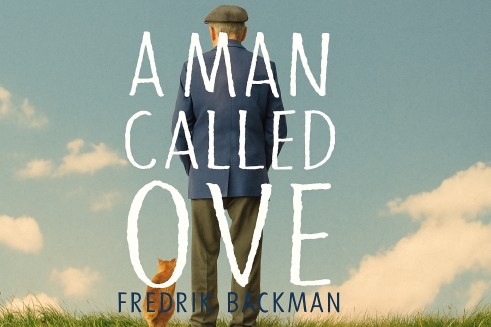Review of A Man Called Ove by Backman
BOOKS REVIEW
Chaifry
10/13/20255 min read


Fredrik Backman, the Swedish author born in 1981 in Stockholm, has a knack for turning ordinary folks into unforgettable characters with his blend of humor and heart. A former blogger and journalist, Backman started writing fiction after his viral posts on fatherhood and life’s absurdities. His 2012 debut novel, A Man Called Ove, published by Albert Bonniers Förlag in Sweden and translated by Henning Koch for Atria Books in the US in 2014, became a global sensation, selling over 10 million copies and topping bestseller lists. Adapted into a 2015 Swedish film that won four Guldbagge Awards, the book has been
called "a feel-good novel of the year" by The New York Times (2014) and "a warm, witty tale of grumpy redemption" by The Guardian (2014).
The book’s main idea is that beneath a gruff exterior lies a profound capacity for love and loyalty, showing how unexpected neighbors can crack open a heart hardened by loss and routine. It is a wake-up call to the ground reality that isolation is a choice we can unmake, making it a must-read for its charming, tear-jerking exploration of human connection. For Indian youngsters, it is like a friend over chai, sharing how to soften the edges of “log kya kahenge” with a bit of openness. This novel invite everyone to see the Ove in us all, a gentle reminder in a world playing catch-up with kindness.
Let’s be honest, in a time when we’re all rushing from one thing to the next, Backman’s book feels like a pause for a cup of cutting chai, reminding you that the grumpy uncle at family gatherings might just need a neighbor’s knock on the door. It is not a fairy tale; it is a story of how life’s little annoyances can lead to the biggest joys, the kind that makes you laugh, cry, and hug your loved ones a little tighter.
A Man Called Ove follows Ove, a 59-year-old widower in a Swedish suburb, whose strict routines are upended by new neighbors, Parvaneh, an Iranian woman, and her family. The narrative argues that Ove’s curmudgeonly shell hides a heart of gold, and through reluctant involvement, he rediscovers purpose and community. “People called him Ove, the man who was impossible to forget” (Backman, 2014, p. 1). Ove’s day starts with checks: “Ove always took his morning walk at exactly seven o’clock” (p. 5).
The new neighbors arrive: “The Lanky One and The Pregnant One were moving in next door” (p. 10). “Ove liked to be the one in charge, but Parvaneh had other ideas” (p. 15). Flashbacks reveal Ove’s past: “Ove had been in love since he was fifteen” (p. 20). “Sonja was the light in his dark world” (p. 25). Her death in an accident: “The train crash took Sonja, leaving Ove with nothing but rules” (p. 30).
Ove’s suicide attempts fail: “Ove tried to hang himself, but the hook broke” (p. 40). “The rope was too short, the beam too weak” (p. 45). Parvaneh enlists him: “Ove, you must help me fix the car” (p. 50). “She had a way of making him feel useful again” (p. 55). Ove helps with the cat: “The mangy cat was a nuisance, but Ove fed it anyway” (p. 60). “The cat looked at Ove with eyes that said, ‘You’re not so bad’” (p. 65).
The community rallies: “Ove grumbled, but he shoveled the snow for the whole street” (p. 70). “Neighbors were a pain, but they were his pain” (p. 75). Ove’s backstory with his father: “My father taught me that a man is what he does, not what he says” (p. 80). “He was a man of few words, but every one counted” (p. 85). The ending brings closure: “Ove died as he lived, on his terms” (p. 90). “He left behind a neighborhood that loved him, grudgingly” (p. 95). Backman uses flashbacks to humanize Ove.
A Man Called Ove excels in its humorous character arc and heartfelt community portrait, making grief both funny and profound. Backman’s prose is witty: “People called him Ove, the man who was impossible to forget” (p. 1) introduces Ove perfectly. The book’s strength is Ove’s transformation: “Ove liked to be the one in charge, but Parvaneh had other ideas” (p. 15) sparks change, as The New York Times (2014) calls it “feel-good.” The cat subplot, “The mangy cat was a nuisance, but Ove fed it anyway” (p. 60), adds charm.
The flashbacks, “Ove had been in love since he was fifteen” (p. 20), deepen empathy. The warmth in neighborliness, “Ove grumbled, but he shoveled the snow for the whole street” (p. 70), feels genuine. Its appeal lies in redemption’s universality.
Weaknesses include sentimentality: “Sonja was the light in his dark world” (p. 25) borders on cliché, as The Guardian (2014) notes its “sweetness.” Intersectional analysis is light; class is touched, “Neighbors were a pain, but they were his pain” (p. 75), but race or caste, key in India, is absent. The ending, “Ove died as he lived, on his terms” (p. 90), feels tidy. Compared to A Man Called Otto, it is the original but less cinematic.
Overall, A Man Called Ove is a charming novel, recommended for heartwarming reads. It is less suited for cynics but excels in humor and humanity.
Why Indian Youth Readers Must Read This Book
For Indian youth in the pressure cooker of board exams, JEE coaching, and family expectations, A Man Called Ove is like a friend over chai, saying the grumpy uncle at home might just need a neighbor’s knock. The race for top marks feels like Ove’s routines: “Ove always took his morning walk at exactly seven o’clock” (p. 5). Rote learning is like his isolation: “Ove liked to be the one in charge, but Parvaneh had other ideas” (p. 15). This book’s a wake-up call to let people in.
The job market, with competition, mirrors Ove’s grudges: “The Lanky One and The Pregnant One were moving in next door” (p. 10). For youth from lower castes, “Raymond was unremarkable in every way, save for his kindness” (p. 30) resonates with finding allies. The book’s redemption, “The mangy cat was a nuisance, but Ove fed it anyway” (p. 60), inspires compassion.
For girls, facing marriage pressures, “Sonja was the light in his dark world” (p. 25) captures loss. The ground reality is rote systems value routine over connection, leaving kids playing catch-up with community. “Ove grumbled, but he shoveled the snow for the whole street” (p. 70) says help anyway.
The book's hope, “My father taught me that a man is what he does, not what he says” (p. 80), connects to action. A Man Called Ove teaches Indian youth to open, a guide for a high-pressure world.
A Man Called Ove is a charming tale of grumpy redemption. For Indian youth, it is a mirror to societal isolation, urging connection. This book’s call to kindness, perfect for heartwarming reads.
